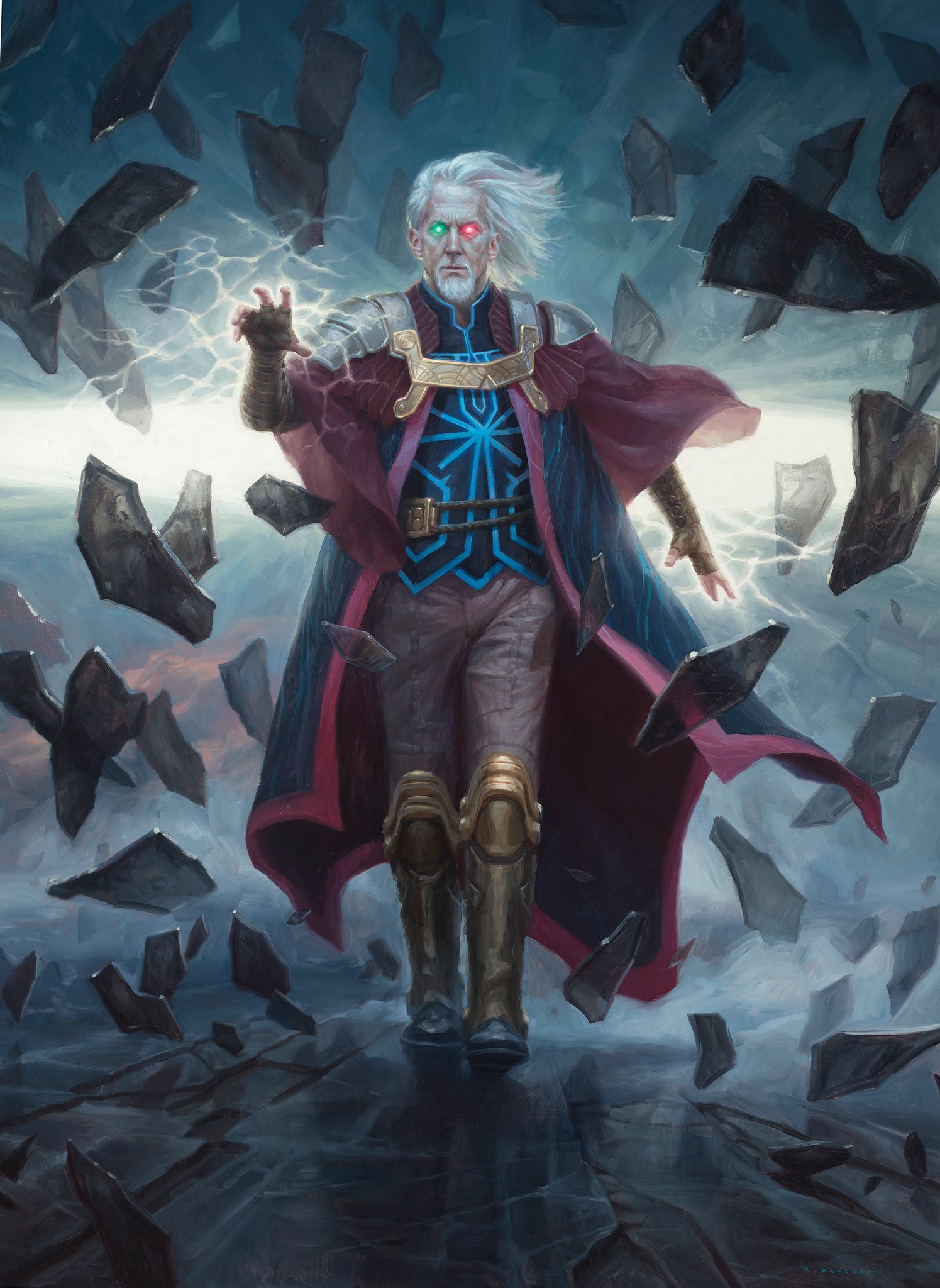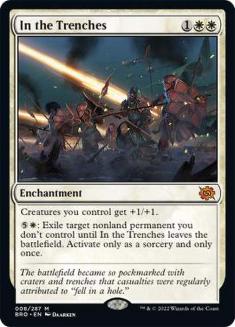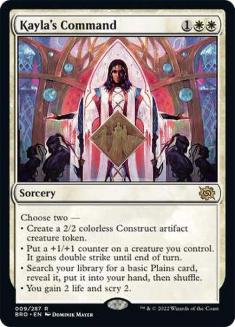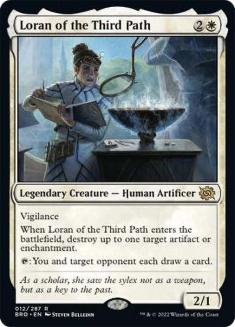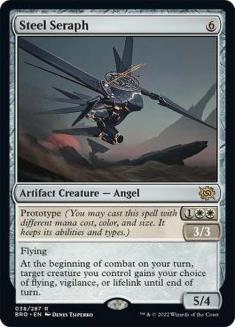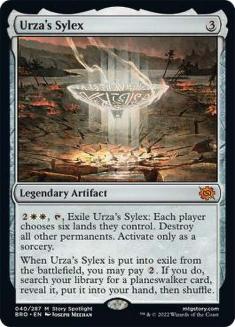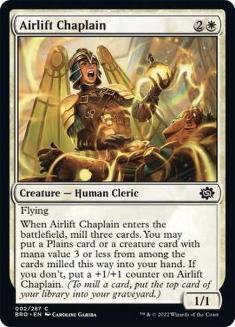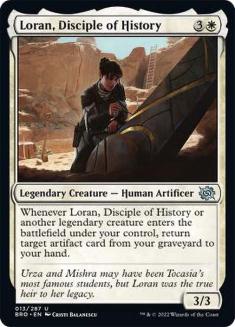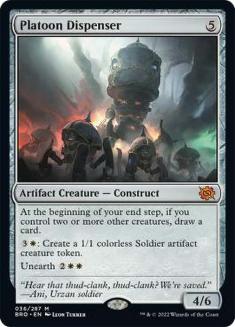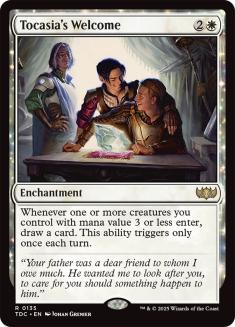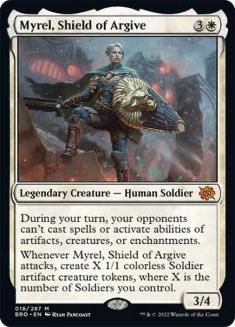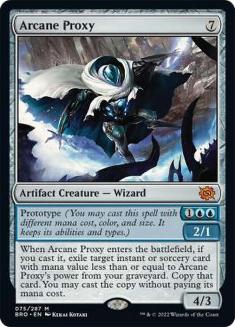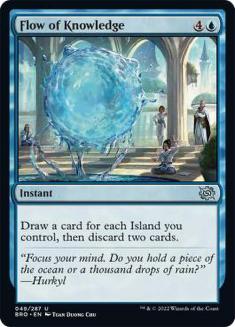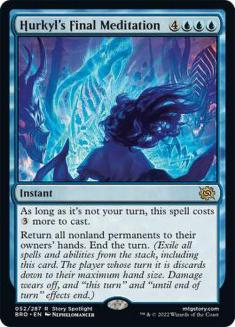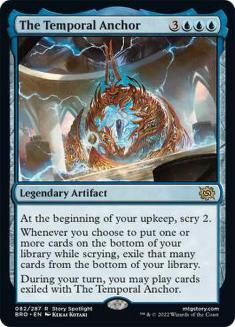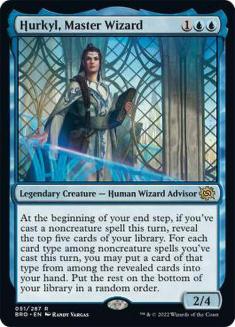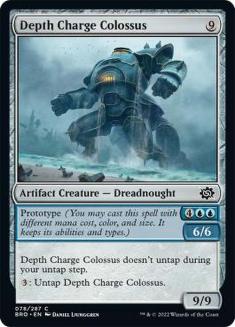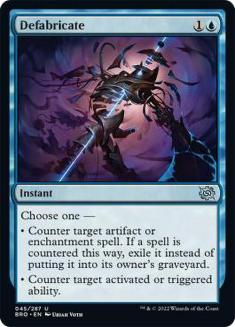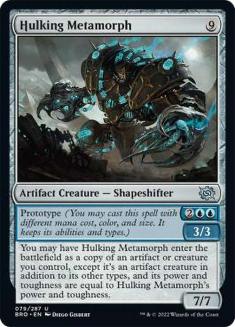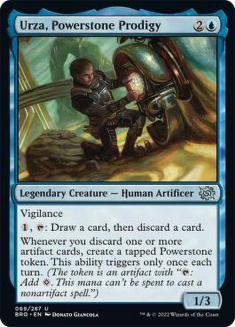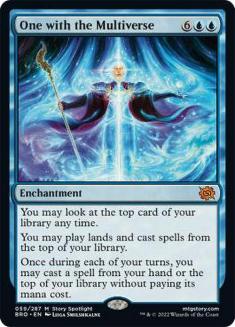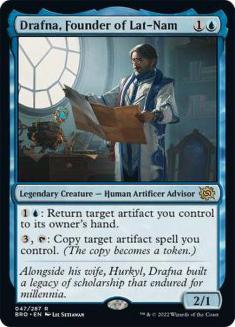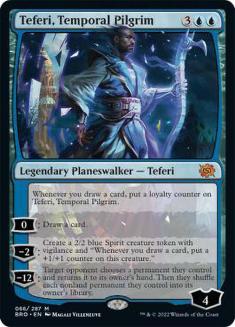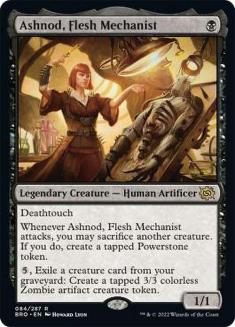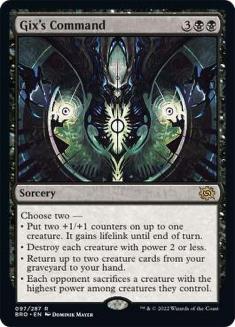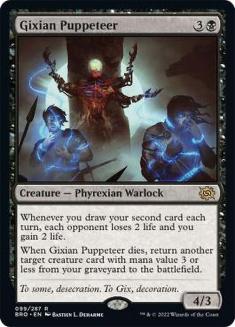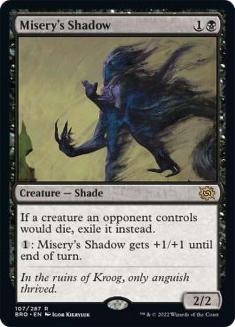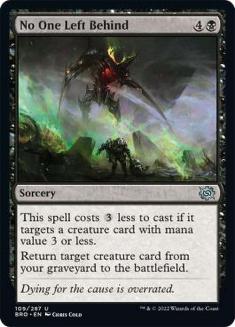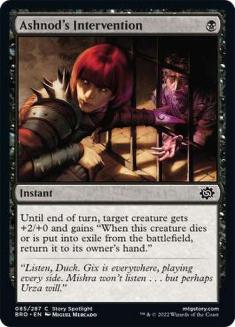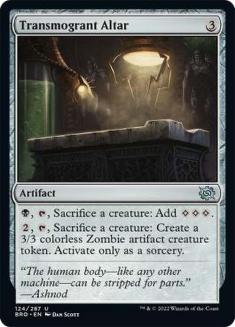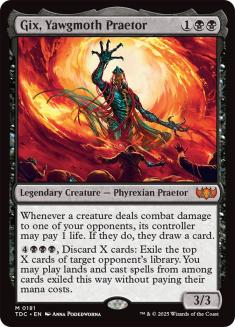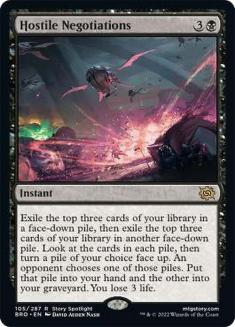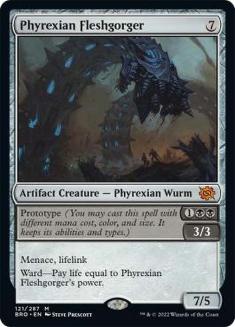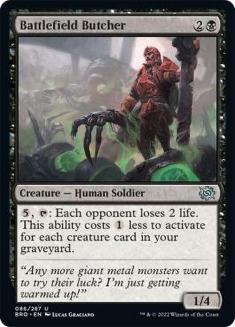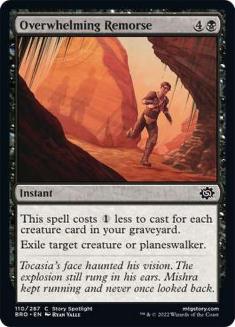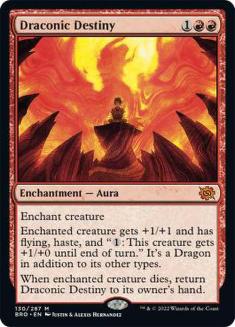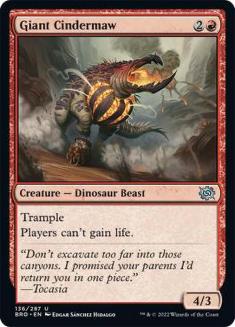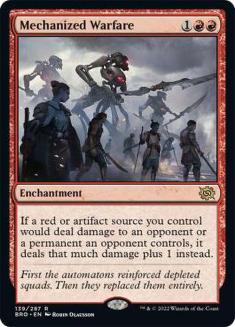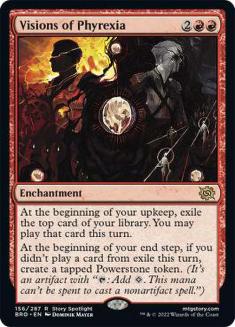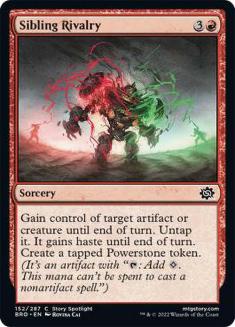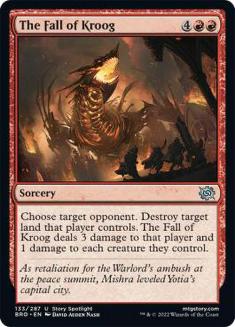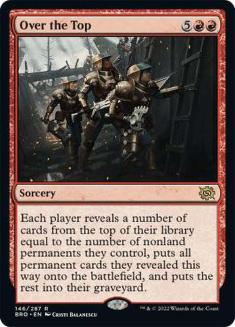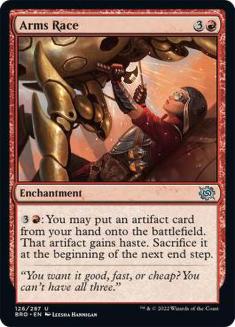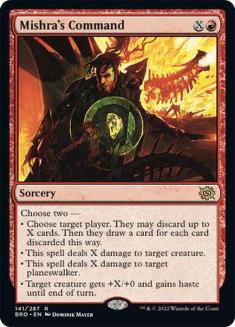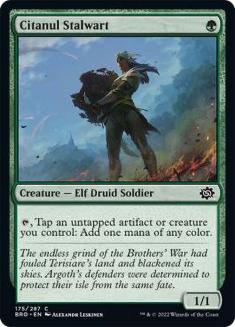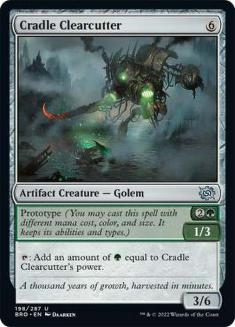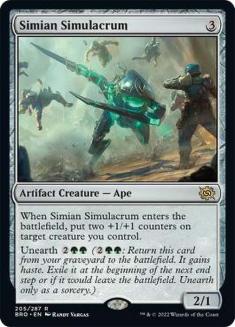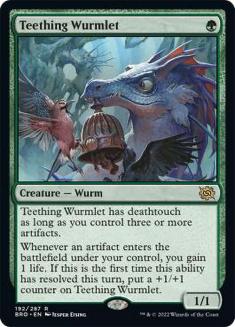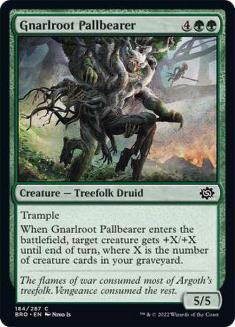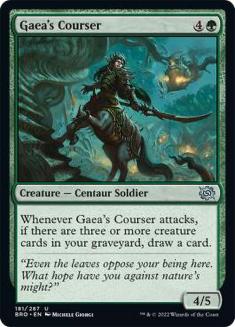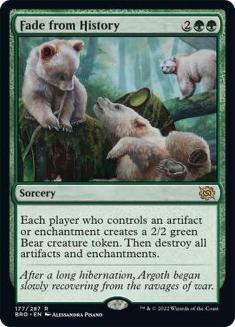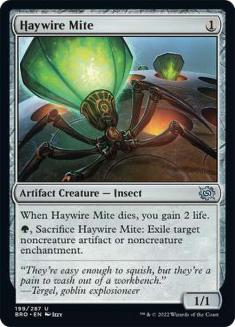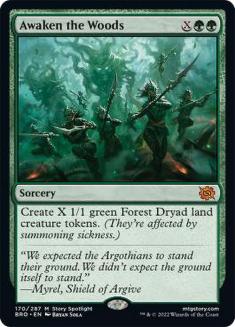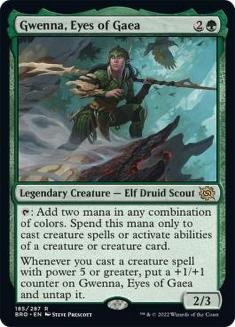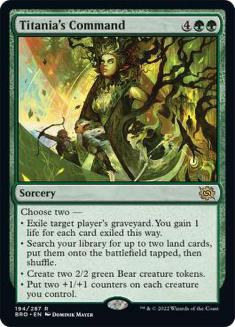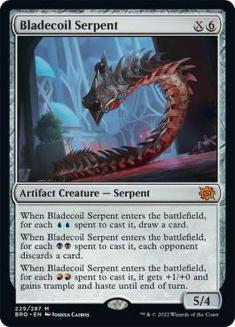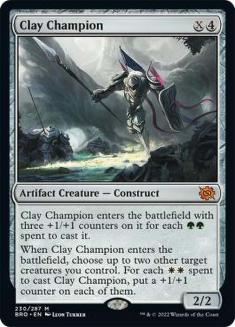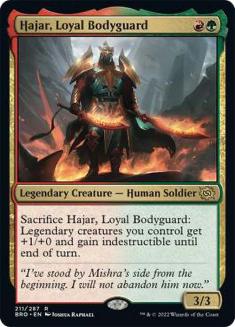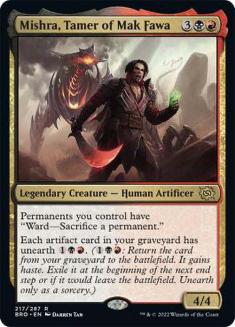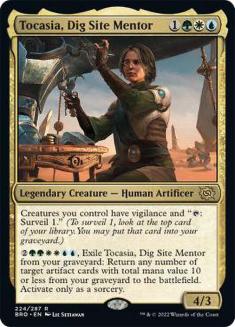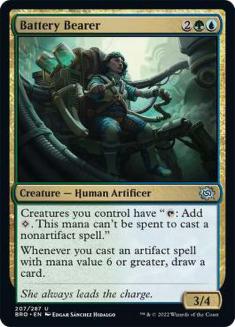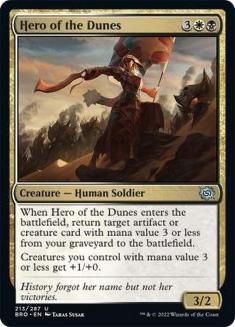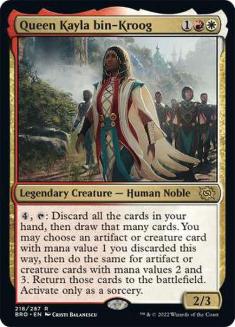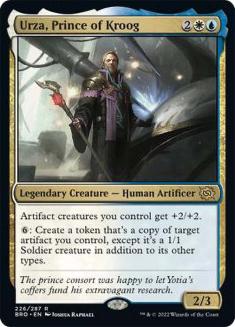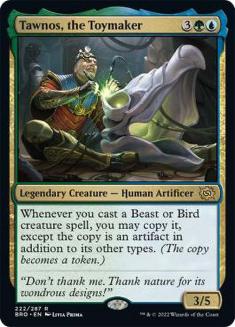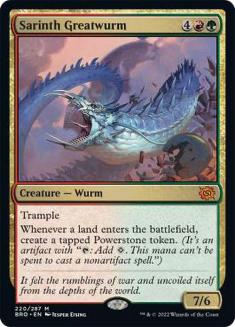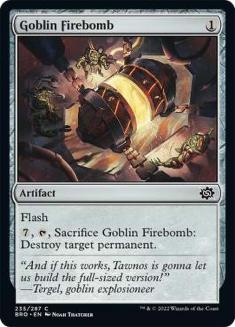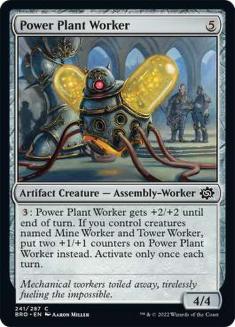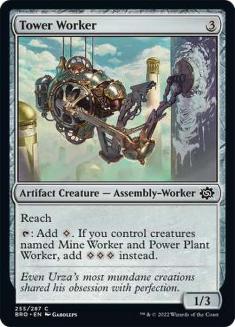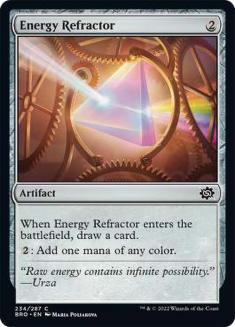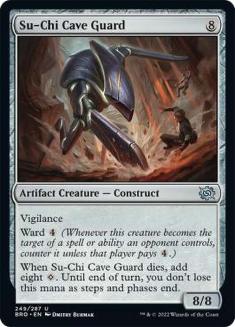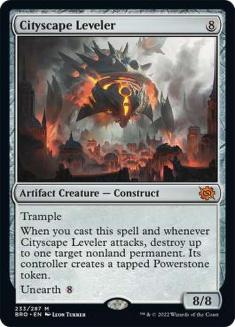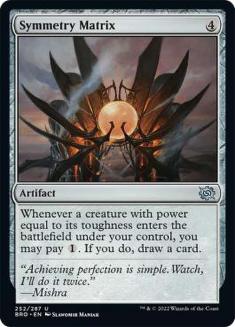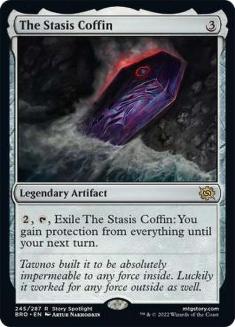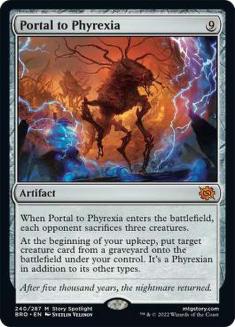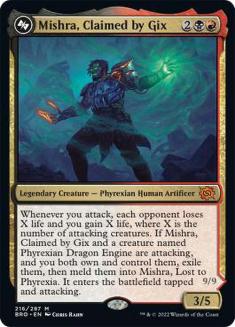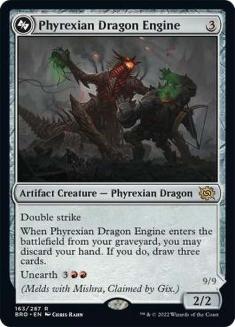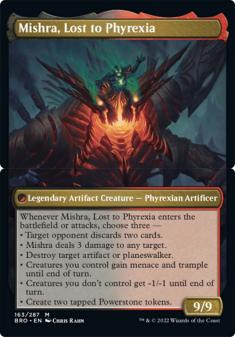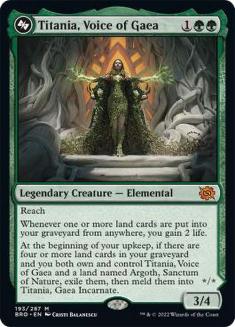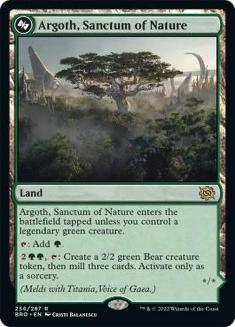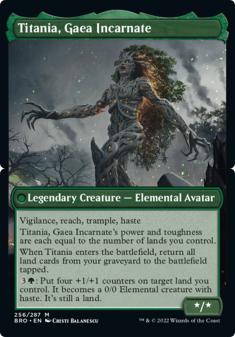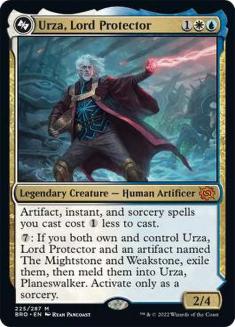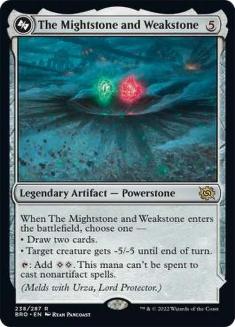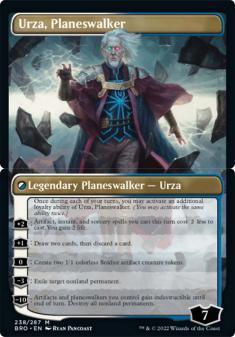One family. A legion of artifacts. A single, epic battle. The Brothers’ War has come and left in its wake more cards for your Commander decks than you’ll know what to do with. Evoking the titanic conflict that was suggested in Magic’s earliest days, The Brothers’ War will go down as one of the most impactful sets for Commander in years.
This review is for Commander only. Some cards will be standouts in other Constructed formats and Limited, but we’ll only take note of them if they’ll be significant for Commander. Additionally, please remember that I’ll be looking at these cards through the lens of Commander as it is played in the broadest group. If a card has particular implications in other corners of the format, I’ll make specific mention of it.
I’ll break down the cards by color, which includes multicolored and colorless (basically artifacts and land). I’ll also do something for this review that I don’t normally do. Usually, even if an artifact with no colored pips in its mana has colored mana pips on it elsewhere, I’ll simply list it with the other artifacts (the same goes for cards with color that have different colored pips in their text box). Since the very clever prototype mechanic is so prevalent, I’ll put those cards under the appropriate color based on their color identity instead. This is a change I probably won’t pick up on for future reviews.
I’ll list a few Honorable Mentions, the best common and uncommon that didn’t make the list elsewhere, and then the Top 5. I’ll finish by grading the color from A to F. Let’s dive right in.
White
Honorable Mention
Best Common
Best Uncommon
Top 5
I’m a believer in creatures, so Platoon Dispenser letting me draw a card for free when I’m doing what I’d normally do anyway is all kinds of win. The ability to create tokens and the fact that it has unearth just push it over the top.
It’s nice to see an uncommon breaking into the top spots, especially one that’s flavorful in addition to useful. Whether you want to keep people from being able to counter your stuff or just need some super graveyard removal, Calamity’s Wake is there for you. The only thing that keeps it from being higher on the list is that it hits our own graveyard, too. Maybe we play it in a deck with Wheel of Sun and Moon so that we don’t have to worry about our graveyard in the first place?
The thing that struck me out of the gate with Tocasia’s Welcome is that it’ll trigger when I create tokens on other players’ turns. It goes straight into decks which are also playing Ephara, God of the Polis.
A card that I expect to get included at the highest-power tables, Soul Partition offers excellent flexibility. When used on an opponent’s creature, they have to pay extra to get it back. For our own creature, we’ll save it from a battlefield wipe or targeted removal.
We’ll be the only ones with combat tricks under Myrel, Shield of Argive, who keeps our opponents from doing pretty much anything on our turn. Add on top of that giving us an ever-increasing bunch of Soldiers, you can see why our friend with the cool lion shield makes the top spot.
Grade: A. Solid density, excellent cards at the top.
Blue
Honorable Mention
Best Common
Best Uncommon
Top 5
I like Clones, and Hulking Metamorph is in the right mana-value neighborhood of a Clone. The upside is that we can also copy an artifact as well as a creature. The downside is that we’re limited to things that we control. The power and toughness are also limited by the Metamorph’s effect.
You have to do a little work to get there, but then again, these are the kinds of deckbuilding challenges that I enjoy. I see some Goblin Welder-type shenanigans here, trading that Powerstone token for the Darksteel Colossus that we just pitched into the graveyard. In the right deck, it’s just the fact that we’re getting an extra little something for doing the things we want to do anyway that pushes this Urza over the top.
One with the Multiverse does everything that we want out of an eight-mana sorcery. It’s Future Sight that other players can’t see. As a bonus, it gives us the opportunity to cast a spell (even from hand!) for free. If One with the Multiverse sticks around, it’ll save us a boatload of mana over the course of a game. The worst case is that we’ll get at least one free spell off it (since we’ll maintain priority after One with the Multiverse resolves).
Drafna, Founder of Lat-Nam offers all kinds of play. Bouncing an artifact doesn’t tap him, so we can do it multiple times should the need arise. We can even do it when he’s tapped from activating the second, very saucy ability. With that ability, we can copy artifact creature spells, too, so I expect to see battlefields with extra Solemn Simulacrums. The card also makes me wonder if we could use the unheard-of Drafna’s Restoration in some devious way, like make an opponent’s next X draws kind of dead.
Urza and Mishra do all the heavy lifting and that apple-polisher Teferi gets all the press. Putting loyalty counters on it with every card draw is a little absurd, since Wheels definitely happen in Commander games. Don’t underestimate the value of that Spirit token that the -2 ability creates, since it keeps piling up counters as you’re moving towards using that -12 ability. It has vigilance, so it’s great on offense and defense.
Grade: B. Blue gets the dreaded “it’s fine” for this episode. There’s nothing really wrong with it, but the top cards lack a little punch.
Black
Honorable Mention
Best Common
Best Uncommon
Top 5
Letting opponents draw cards isn’t the best, but that doesn’t dampen how I feel about Gix, Yawgmoth Praetor. The ability is quite expensive to activate, but it’s well worth it, getting to cast a bunch of spells for free. Plus, those discards will set up where we want to go with our graveyard.
Those of us who enjoy games within the game will love Hostile Negotiations. Whichever pile we choose, we end with three cards for three life. That’s a bargain even if we’re getting the worst three of the six, which isn’t going to happen that often. As it’s an instant, we can also bring up combat tricks. Also, we can fuel the graveyard with things we want to later reanimate—but we’ll have to be tricky and bait some strong noncreature card in that pile as well in order to force the opponent to bin that pile.
The more I see the prototype mechanic, the more I like it. It gives us choices in the early- to mid-game and then something bigger and better late. A 3/3 with menace, lifelink, and ward equal to the creature’s power—for just three mana! The 7/5 version for seven is beefy and deadly.
Speaking of costing less, each opponent losing two life for just a tap is quite something. Again, we’re in black, so getting the requisite number of creatures into the graveyard will be easy.
I love seeing a common card making the list, especially in the top spot. This card is basically a black Swords to Plowshares which doesn’t give life. Exiling a creature is huge, especially when we cast it for just one black. The condition of costing less isn’t going to be all that difficult to fulfill.
Grade: A-. Some exciting stuff, but just loses a little off the edge in the pop of the top cards.
Red
Honorable Mention
Best Common
Best Uncommon
Top 5
I’m generally not a fan of taking an existing card and stapling “draw a card” onto it, but when that card is Fling, I get a bit more forgiving.
4. Over the Top
Talk about an aptly-named card. Over the Top is a kind of Warp World where our existing permanents don’t go away. We’re motivated to play Over the Top in a deck that creates extra permanents in the form of tokens, whether creatures, Powerstones, or Treasures (even Scrap) in order to always be ahead of the curve when revealing cards and putting them onto the battlefield.
3. Arms Race
(Correctly-costed) Sneak Attack for artifacts? Sign me up! We’ll want to put Arms Race into a deck that creates value when artifacts die, like with Wurmcoil Engine or Mycosynth Wellspring.
In Commander, we’re much less likely to see the first mode, more frequently going for the “nuke the mana rocks” option. That second mode, however, will have such an impact on the game. It’ll be at the forefront of the artifact (more specifically, Treasure) hate that’s running around the format.
I’m a fan of all the modes, although I suspect we won’t be using the one to kill a planeswalker unless we have no ways of creatures getting through to do the job. It’s going to take some mana, but once we have it, this card is sauce.
Grade: C. Density is middling, best cards are only mildly interesting. Red gets stuck again.
Green
Honorable Mention
Best Common
Best Uncommon
Top 5
Bears come and eat all the enchantments and artifacts. Seems pretty simple. We’ll have something in our deck—like Solemn Simulacrum—that we won’t mind going to the graveyard.
4. Haywire Mite
I suspect that we’ll play Haywire Mite in a deck that likes to recur it. What bumps this card way up in my esteem is that it exiles instead of destroys. Sure, we can’t hit creatures, but that will hardly leave us wanting for targets. Haywire Mite will take out a God that doesn’t yet have enough devotion. I’m replacing Silverchase Fox with Haywire Mite in my Halloween with Karador deck.
X marks the number of lands we’ll ramp into when we Awaken the Woods. The question in an early-game situation is how long to wait. The value starts at X=2, but gets greater from there. Obviously, those lands being also creatures they’re susceptible to summoning sickness, so it’ll be next turn to tap them for mana (without something that gives them haste). That’s okay; I’ll wait.
You keep reading, and Gwenna, Eyes of Gaea keeps getting better. Two mana to cast only creatures with is easy. Casting creature spells with five or greater power, also pretty easy. That’ll give us another shot to tap Gwenna to fuel something else.
Flexibility is the key with Titania’s Command. In my group, I doubt we see anyone play the third mode to create two Bear tokens. The other three modes are saucy. Exiling someone’s graveyard and gaining life for it is almost too good to be true. Getting two lands can push us over the top since we’re not limited to basic lands (we can go get Urborg, Tomb of Yawgmoth and Cabal Coffers if we’re playing black). In a counters-matter deck, putting two +1/+1 counters on every creature can be a game-ender. There’s something to like everywhere with Titania’s Command.
Grade: A-. The density is a little lower than we might want. The splashiest cards are right in the wheelhouse of compelling without being too generically good.
Multicolored
Honorable Mention
Best Uncommon
Top 5
We’re finding more examples of Sun Titan-like triggered abilities for things with mana value three and lower. Hero of the Dunes only gets that when it enters the battlefield. It then makes up for the lack of an attack trigger by providing an Anthem for all creatures with mana value three and lower—which most importantly includes tokens.
It’s unlikely that every time we activate Queen Kayla that we’ll hit on all three mana values, but we’ll get enough value out of repeat activations. In the meantime, we’ll run some graveyard strategies to take advantage of what got dumped in but not brought back out.
Urza, Prince of Kroog offers a big buff to our artifact creatures. He can then make copies of other artifacts we control which are 1/1 Soldiers (so 3/3 while he’s on the battlefield). I certainly wouldn’t mind having a copy of Conjurer’s Closet running around. We’re limited only by our imaginations in what we can copy with Urza. I look forward to seeing some pretty cool builds, especially those with Mycosynth Lattice in them.
I currently have a Beast tribal deck with Ruric Thar at the head of it. I think I’ll swap out the red for blue and make it a Tawnos, the Toymaker deck instead. Getting another copy of Garruk’s Packleader, Indrik Stomphowler, or even just good old Rampaging Baloths (two landfall triggers!) is exceptional value. There’s always a Bird build as well, but I’ll focus on the meatier one.
When we read closely, we see that Sarinth Greatwurm triggers on any land entering the battlefield from any player. Odds are we’re getting at least four Powerstone tokens per turn cycle. From there, it’s artifact mana central, or maybe metalcraft, or any of a number of artifact strategies. I look forward to just jamming Sarinth Greatwurm into any deck and see how good it can be.
Grade: A. Hits on all facets of what we like to see.
Colorless
Honorable Mention
Best Common
Best Uncommon
Top 5
With both cast and attack triggers, Cityscape Leveler will cause lots of destruction. Note that it doesn’t have to target something from the defending player; it can hit any nonland permanent. While it’s doing that, it’s still dealing out eight-damage hits.
Symmetry Matrix is a much more subtle card, as we have to plan out how we spend our mana. Will it be drawing that card or saving the mana for casting something else? Symmetry Matrix gets slotted into creature-heavy decks and then let loose. Imagine having Symmetry Matrix and Mentor of the Meek, then creating tokens on everybody’s else’s turns. There’s lots to like here.
3. Liberator, Urza’s Battlethopter
Colorless and artifact spells (so even those with color, like Bolas’s Citadel) having flash means being able to hold up mana for interaction on everyone else’s turns. That’s enough to play Liberator, Urza’s Battlethopter, which costs only three, but we’re not done. If the amount of mana spent to cast any spell is greater than Liberator’s power, we get to put a +1/+1 counter on it. We’ll obviously reach critical mass at some point, but if that’s the case we’re probably winning.
The Stasis Coffin is pretty much Teferi’s Protection outside white. The low activation cost means that we don’t have to hold up much mana when we pass the turn. All we need is two to hit the ejector seat. Unlike Teferi’s Protection, however, our stuff isn’t as well-protected since it’s not phased out. A battlefield sweeper will still wipe out our creatures, and an activated Myojin of Night’s Reach will still make us discard our hand. The Stasis Coffin is still the latest thing in Fog technology.
Portal to Phyrexia is such a Timmy card, and I’m here for it. It’s pretty simple in both card game design and storytelling. When we’ve invested that nine mana (not that difficult with some Treasure or other artifact help), each opponent has to sacrifice three creatures. Then on each upkeep we get to reanimate a creature from any graveyard, compleating it, since it’s now also Phyrexian in addition to its other types. All Shall Be One.
Grade: A. All kinds of good stuff here.
Special: The Meld Cards
While they reasonably could go into their respective colors, it feels more natural to separate out the meld cards, since they’re the big stars of the set.
Mishra
On his own, Mishra, Claimed by Gix is pretty spicy, draining each opponent for the number of attacking creatures while gaining us that much life. The Phyrexian Dragon Engine doesn’t do much on its own, although a 2/2 with double strike and an interesting triggered ability all for three mana is a decent rate.
It’s when the two meld into Mishra, Lost to Phyrexia that we see real power. It’s a 9/9 with six different triggered abilities on entering the battlefield or attacking. The big one is giving all our creatures menace and trample until end of turn, Mishra’s only evasion. We can get potential blockers out of the way and create unfavorable blocks with the ability that gives all creatures we don’t control -1/-1. Mishra riding the Dragon Engine can also destroy an artifact or planeswalker, deal three damage to a target, create two tapped Powerstone tokens, or have an opponent discard two cards. The six abilities offer tremendous battlefield control if we can keep Mishra alive.
Titania
Already nice at three mana for a 3/4, Titania, Voice of Gaea gains us two life whenever a land is put into our graveyard from anywhere. We want that to happen, because the trigger condition to meld is having four or more land cards in our graveyard. Argoth, Sanctum of Nature can produce Bear tokens in addition to green mana.
Once they’re melded, they become Titania, Gaea Incarnate. She has vigilance, reach, trample, and haste. Her power and toughness are equal to the number of lands we control, which increased when she entered the battlefield and returned all the lands from our graveyard. She also has an activated ability which costs 3G, but there’s no tapping involved. The ability puts four +1/+1 counters onto a land and makes it also a creature. I expect that her power and toughness will be close to double digits most of the time. Like we want all melded creatures to be, this one can lay out some beats.
Urza
Urza, Lord Protector is simply a 2/4 which makes our artifact, instant, and sorcery spells cost one less. The Mightstone and Weakstone enters the battlefield and either draws us two cards or gives a creature -5/-5 until end of turn. It then provides colorless mana that can’t be used to cast a nonartifact spell.
Unlike the trigger condition for the two other meld pairs, this one is activated by Urza, spending seven mana (and no tapping). Urza, Planeswalker then becomes truly frightening. It has seven loyalty counters, which it can buff up with two abilities. For +2, our artifact, instant, and sorcery spells cost two less to cast this turn and we gain two life. At +1, we draw two and discard one. At zero, we get two 1/1 colorless Soldier tokens, nominally to protect Urza from attackers. We can exile a permanent with the -3 ability. Then there’s the -10 biggie, making all our artifacts and planeswalkers indestructible then destroying all nonland permanents. It’s a fitting end to the story of the cards in The Brothers’ War.
Overall Grade
The set grades out as an A for Commander from both a gameplay and flavor perspective, as we get to see the whole Brothers’ War play out in the cards. While thematically the set is quite artifact-heavy, there are still plenty of interesting build and play lines to take the cards down. Lots of brewing has begun already. I’m sure we’ll see the results at our Commander tables very, very soon.
Always remember we have a channel on the Commander RC Discord server dedicated to discussing my articles. I’d love to hear about features that you’d like to see, material you want more coverage on, or even things that you think just aren’t working. I’m all ears. Join nearly 8,000 friends for discussion of not just this piece, but on a wide variety of topics—both Commander-related and not. Hope to see you there!
Visit my Decklist Database to see my Signature Decks, the Chromatic Project, and more!

